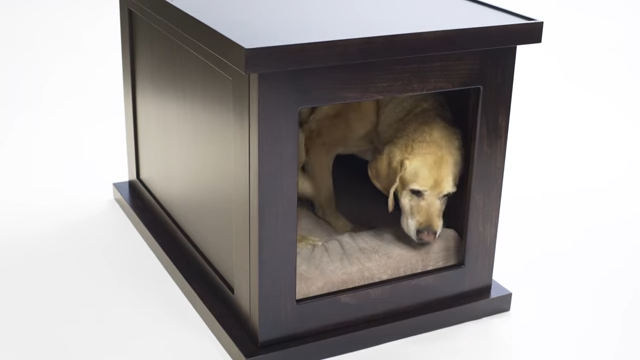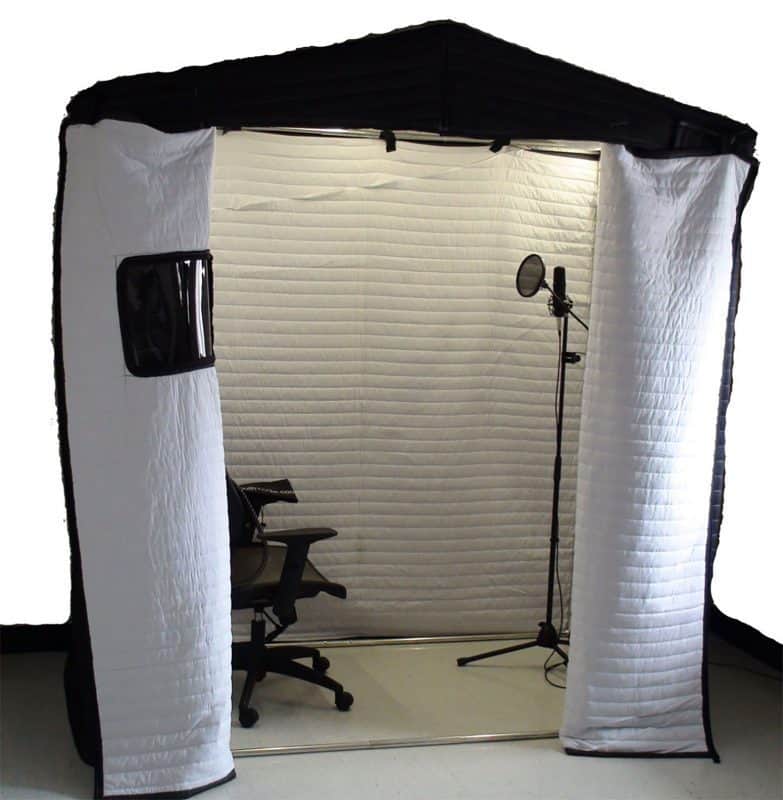How to Soundproof a Laundry Room
Laundry rooms definitely make our life simpler. Come on, having all those garments clean in a couple of minutes saves us not just time but also energy! However, let’s be honest: the different sources of noise coming from the laundry room may be very annoying. Imagine yourself at home, trying to read a book or catch up on the newest episodes of your favorite television show. You decide to put the clothing in the washing to save time.
The noise from the laundry room is so loud that you won’t be able to sleep until the laundry is finished. When the loudness becomes too much to handle, you will begin to consider alternatives. Getting a new, quieter washer is a good idea, but why not think about how to soundproof a laundry room?

Let’s go the other way around and take a look at these techniques, and the soundproofing materials you can use in soundproofing your laundry room.
Why Is Your Washing Machine Noisy?
Let’s start with this question. We have yet to encounter a washing machine that is completely quiet. They squeak, shake, and vibrate. The vibration of washing machines causes the lower-pitched rumbling sound in the laundry area.
The vibrating sound of a washing machine operating in a laundry room reverberates throughout the house’s solid components. So, it can be heard throughout the house. As a result, soundproofing a laundry room might be challenging. We have, however, discovered a solution for you. Continue reading to learn about innovative methods to minimize the noise in your laundry room.
Video: How to Soundproof a Washing Machine – 3 Vibration Reduction
So, How to Soundproof a Laundry Room?
Soundproofing a laundry room requires smothering both impact and airborne noise. You may do both in a variety of ways, and the strategies listed below can help you decrease the noises that emanate from your laundry room.
1. Laundry Door
Airborne noise may flow out of your laundry room and into the rest of your house through gaps in the door. As a result, soundproofing the doors is necessary to reduce unwanted noise. There are various techniques to reduce airborne noise transmission by sealing the air gaps in your laundry room doors. Among the options are:
| 1. Weatherstripping tape | Weatherstripping tape, believe it or not, can efficiently soundproof a laundry room door. While this tape’s primary use is to prevent heat transfer and stop drafts, it may also be used to filter out unpleasant sounds. Apply the tape to any gaps along the length of your door, such as at the top and between the slats if your door is slatted (Weather Stripping How-Tos for Doors and Windows on askwetandforget.com). |
| 2. Door sweeps | Door sweeps are used to fill the space between a door’s bottom and the floor, we mentioned this in How to Soundproof a Bathroom. Use a door sweep that can be fastened to the bottom of the door or, even easier, a door sweep that can be slipped below the door without having to be attached. |
| 3. Sound barrier | Sound barrier insulation can also be placed on the door to block outside noise. This type of insulation is often composed of vinyl, which prevents airborne noise. Measure the door, cut the insulation to fit, then secure it with nails or glue. It’s worth noting, though, that sound barrier insulation, while effective, may be costly (Learn more about How to Make a Room Soundproof From Outside Noise on silencewiki.com). |
| 4. Soundproofing blankets | Save the best for last-hang soundproofing blankets on the interior or exterior of the doors, or both sides, for the easiest solution. These blankets are thick and constructed of sound-absorbing materials, similar to that of noise-reducing curtains. Make sure you get blankets that are the right size for your doors by measuring them. If you can’t find blankets that suit the precise measurements of your doors, you can modify them to cover the surface. Attach the blankets to the door with glue or nails; otherwise, if you wish to be able to remove them, hang the blanket from a curtain rod above the entrance. |
| 5. Buy a new door | This is the extreme measure you can consider, we know buying new items may seem impulsive, but it is one of the best things you can do. You’ll be dealing with the source of the problem. You don’t just treat the symptoms and ignore the underlying causes. We recommend getting a strong and heavy door. Heavy doors prevent sound from passing through. They are excellent soundproofing materials. When purchasing a new door, be sure it does not contain any air gaps. |
Video: Install a Laundry Room Door
2. Laundry Windows
For your windows, consider purchasing elegant sound-absorbing curtains. The heavyweight fabric should be used for the curtains. The noise from the washers and dryers will be muffled by thick curtains.
| 1. Soundproofing blankets | Alternatively, use a soundproofing blanket to cover your windows. Purchase glomerate blankets to put on the curtain rods. |
| 2. Acoustic curtains | If your laundry room has windows, another effective way to muffle noise from your appliances is to use acoustic curtains instead of ordinary curtains. While you may be worried about the noise the laundry room emits through the window, the curtains will help absorb the general noise in the room, therefore reducing noise indoors (learn more about How to Reduce Noise from Windows on silencewiki.com). |
3. Laundry Walls
Despite being denser than doors and windows, walls are nevertheless responsible for structural noise. Vibrations from your laundry equipment cause the walls in the room to shake, causing vibrations and noise on the opposite side of the walls in your house. Soundproofing the walls is a wonderful option if you’re serious about reducing as much noise as possible from your laundry room.
| 1. Insulate laundry walls | Check to see whether your walls have any insulation, since this is the ideal place to start. After that, you may cover the walls with mass-loaded vinyl, acoustic foam pads, or even soundproof blankets. These will insulate the room, absorb soundwaves and vibrations, and keep noise from the laundry room from causing problems elsewhere in the house. |
| 2. Add more layers | If insulating the walls seems like too much work, adding extra layers to the walls is another option to soundproof the laundry room. There will be echoes in an empty room, especially if there are a lot of vibrations bouncing around. Simply place items from around the house in the laundry room to fill up the area and minimize the amount of empty space. Build shelves around the perimeter of the room to store boxes, blankets, towels, and other items. The more layers you use, the better the sound reduction will be. |
Video: How to Soundproof a Laundry Room Using Mass-Loaded Vinyl
4. Laundry Floor
Soundproofing the floor, like soundproofing the walls and doors, will help with structural sound generated by vibrations. Sound and vibrations frequently bounce and spread over bare floors such as wood, stone, or tiles. Install foam tile flooring or thick rugs that cover the whole floor space to improve acoustics and reduce noise.
5. Invest in New Appliances
Unfortunately, all laundry appliances produce some level of vibration and noise, but machines that are old or broken make a lot more noise. If your washer or dryer is nearly dancing across the room and making an explosion-like noise whenever it is on the spin, it’s time to replace it.
Invest in a Quiet Washing Machine! Modern laundry appliances are significantly quieter than earlier models, so it will be well worth the investment to observe such a reduction in noise. It’s important to remember that regular maintenance is necessary to keep your washing machine and dryer in good operating order. Also, don’t overload them; when they’re too full, they might create more significant disruption.
Finally, make sure your washing machine and dryer are level and don’t contact any of the walls behind them. This makes the vibrations from the machine easier to transfer to the house’s structure.
6. Other Solutions
If the noise continues, you can take a few further steps to reduce it.
| 1. Anti-vibration pads | Anti-vibration pads for your washing machine are available for your convenience. These aid in the reduction of structural noise- the low vibrating noise from the washer and dryer. These are incredibly inexpensive, and you can get two sets: one for your washer and one for your dryer. |
| 2. Corks and towels | You may create your own from corks if you’re on a limited budget or need something quick. Simply trim the corks to fit beneath the washing machine and dryer’s feet. As an alternative, thick fabric (such as towels) can be used as anti-vibration pads. |
| 3. Old boxes | Old boxes and other items that are no longer in use can also be used as soundproofing for the walls. Simply stack them in your laundry room and you’re done! If the walls are filled, the sounds from the washing room will be reduced. You are free to stack as much as you like. After all, who else goes in there but your family? |
In Сonclusion
Consider updating your washing machine and dryer if you can afford it. Newer versions are meant to operate considerably more quietly, as well as being much more efficient, offering more features, cleaning much better, and even helping to decrease your electricity costs and carbon footprint.
Of course, you can spend a lot of money and time soundproofing your laundry room, but you can also accomplish a lot with little money and work, you can even do DIY soundproofing (read also 10 Best Ways to Laundry Room Quieter on quietlivity.com)!
You can successfully reduce the banging, pounding, knocking, and other annoying noises emanating from your laundry room by using a combination of the above-mentioned methods. Start to relax and enjoy the peace and quiet while your clothes are being washed.



